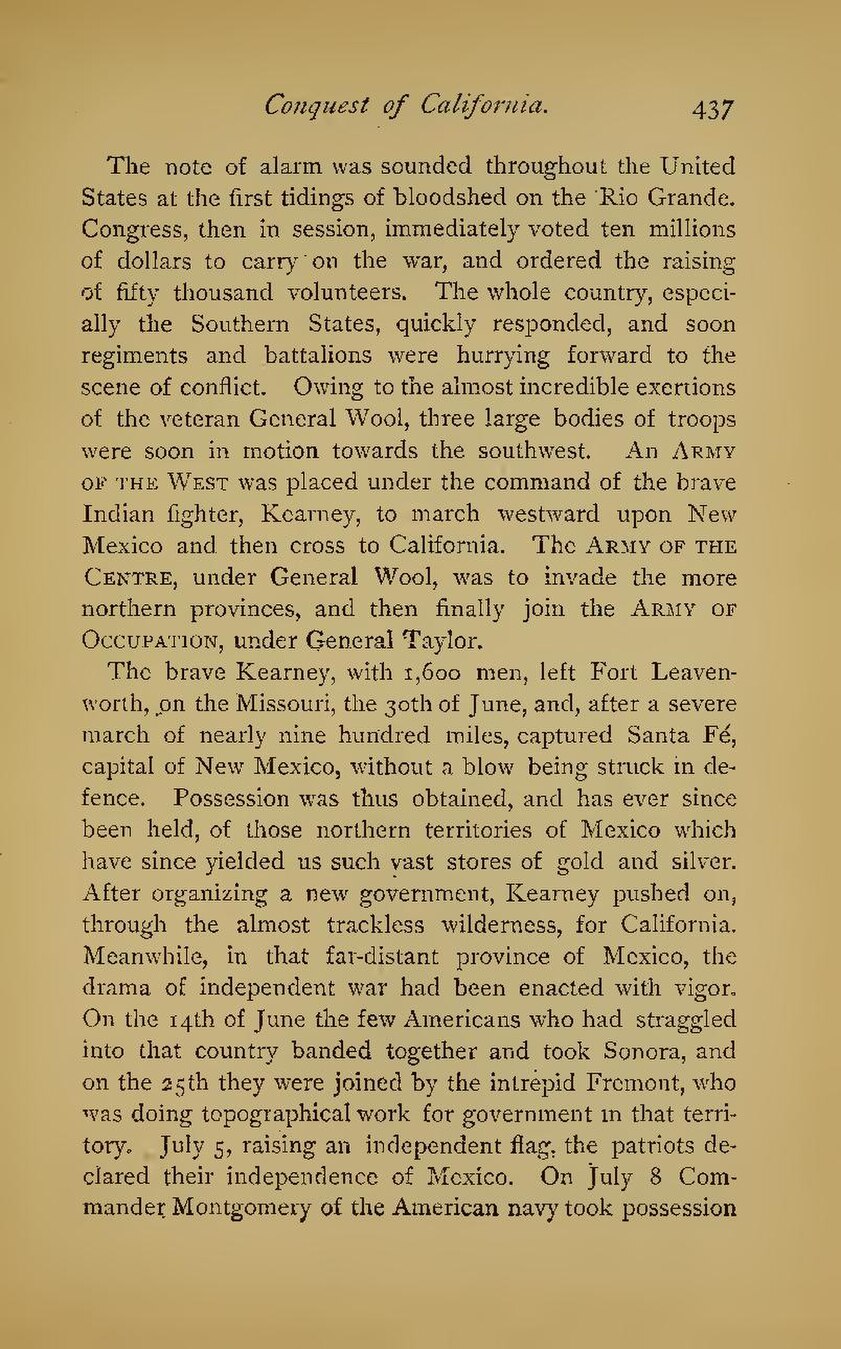The note of alarm was sounded throughout the United States at the first tidings of bloodshed on the Rio Grande. Congress, then in session, immediately voted ten millions of dollars to carry on the war, and ordered the raising of fifty thousand volunteers. The whole country, especially the Southern States, quickly responded, and soon regiments and battalions were hurrying forward to the scene of conflict. Owing to the almost incredible exertions of the veteran General Wool, three large bodies of troops were soon in motion towards the southwest. An Army of the West was placed under the command of the brave Indian fighter, Kearney, to march westward upon New Mexico and then cross to California. The Army of the Centre, under General Wool, was to invade the more northern provinces, and then finally join the Army of Occupation, under General Taylor.
The brave Kearney, with 1,600 men, left Fort Leavenworth, on the Missouri, the 30th of June, and, after a severe march of nearly nine hundred miles, captured Santa Fé, capital of New Mexico, without a blow being struck in defence. Possession was thus obtained, and has ever since been held, of those northern territories of Mexico which have since yielded us such vast stores of gold and silver. After organizing a new government, Kearney pushed on, through the almost trackless wilderness, for California. Meanwhile, in that far-distant province of Mexico, the drama of independent war had been enacted with vigor. On the 14th of June the few Americans who had straggled into that country banded together and took Sonora, and on the 25th they were joined by the intrepid Fremont, who was doing topographical work for government in that territory. July 5, raising an independent flag, the patriots declared their independence of Mexico. On July 8 Commander Montgomery of the American navy took possession
